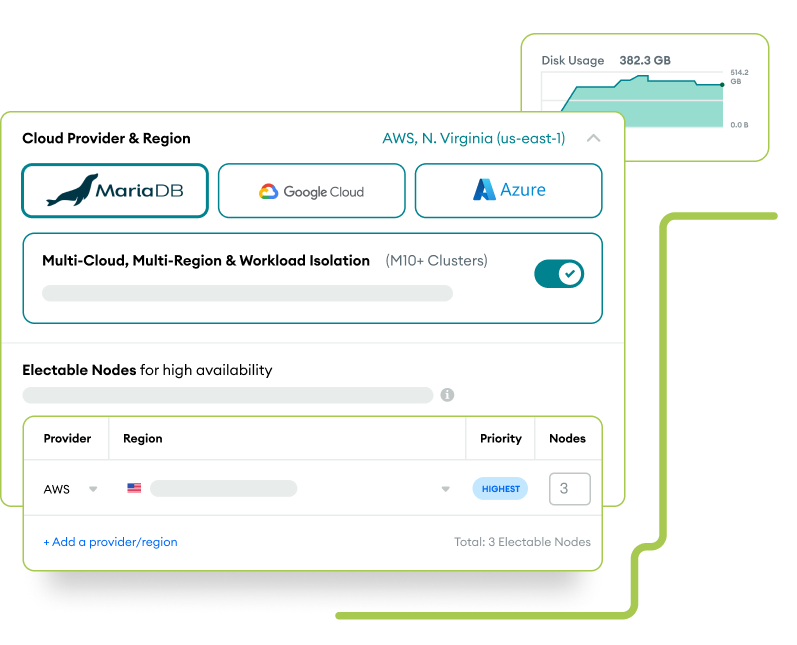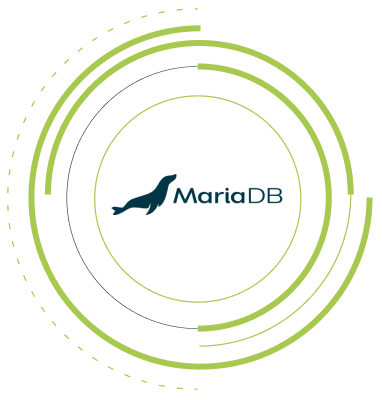TRUSTED BY TEAMS AROUND THE WORLD

From Oracle Database to MariaDB: A Smarter, Freer Future

The Difference Between Choice and Vendor Lock-in

Reduce TCO, maximize Value

How MariaDB Carries the Torch of Open Source Database Innovation

Faster innovation
.svg)
The M in LAMP

Billion+ downloads

Default in Linux distributions

Pluggable storage engines

6 Ways to Do More with MariaDB
Oracle Database compatibility
Columnar storage format
Temporal tables

High availability and scalability
Vector embedded search
JSON functionality

SMARTER CHOICE. STRONGER RESULTS.













FREQUENTLY ASKED QUESTIONS
Organizations are increasingly choosing MariaDB over Oracle due to several key factors:
– Cost reduction: Escape Oracle’s expensive and restrictive contracts and reduce your total cost of ownership with MariaDB.
– Enhanced agility: Embrace modern, agile development practices with MariaDB’s open source flexibility and support for multicloud and container deployments. 70% of new applications leverage open source, and MariaDB empowers this transition.
– Future-proof innovation: Avoid costly proprietary lock-in with Oracle. MariaDB paves the way for innovation with support for diverse workloads, including transactional, analytical and AI/ML.
– Consolidation and efficiency: Streamline your IT spending and consolidate your database infrastructure with MariaDB’s versatile capabilities, reducing the need for multiple specialized platforms.
– Developer preference: Join the growing number of developers who prefer MariaDB’s open source flexibility and community-driven innovation. MariaDB is rapidly becoming the preferred platform for modern applications.
– Migrating to MariaDB offers the significant benefit of transitioning applications with minimal to no modifications, ensuring a stable transition and reducing operational disruptions.
– MariaDB has an Oracle compatibility layer that is a set of features and extensions designed to ease the migration of applications and data from Oracle Database to MariaDB. It aims to reduce the amount of code and schema changes required during the migration process.
Start your technical migration assessment here. After you’ve submitted your assessment, a migration specialist will reach out to review the details of your custom report.
Several factors can contribute to an organization’s decision to migrate from Oracle:
– Oracle contract frustrations: Complex licensing, disruptive audits and perceived support issues can push organizations to seek alternatives.
– Customer demand: Customer preferences for open source solutions and MariaDB’s capabilities can drive migration decisions.
By addressing these challenges and understanding the potential benefits, organizations can make informed decisions about migrating from Oracle to MariaDB and modernize their data infrastructure for greater agility, cost-efficiency and innovation.
Our global clients
 24/7 Expert Support
24/7 Expert Support Zero-Downtime Upgrades
Zero-Downtime Upgrades Built for Mission-Critical Workloads
Built for Mission-Critical Workloads Up to 8 Years of Maintenance Assurance
Up to 8 Years of Maintenance Assurance 24/7 Expert Support
24/7 Expert Support Zero-Downtime Upgrades
Zero-Downtime Upgrades Built for Mission-Critical Workloads
Built for Mission-Critical Workloads Up to 8 Years of Maintenance Assurance
Up to 8 Years of Maintenance AssuranceReady to Make the Switch?
 True open source
True open source
 MySQL compatible for easy migration
MySQL compatible for easy migration
 Better performance
Better performance
 24/7 Expert Support
24/7 Expert Support Zero-Downtime Upgrades
Zero-Downtime Upgrades Built for Mission-Critical Workloads
Built for Mission-Critical Workloads Up to 8 Years of Maintenance Assurance
Up to 8 Years of Maintenance Assurance




.svg)


.svg)